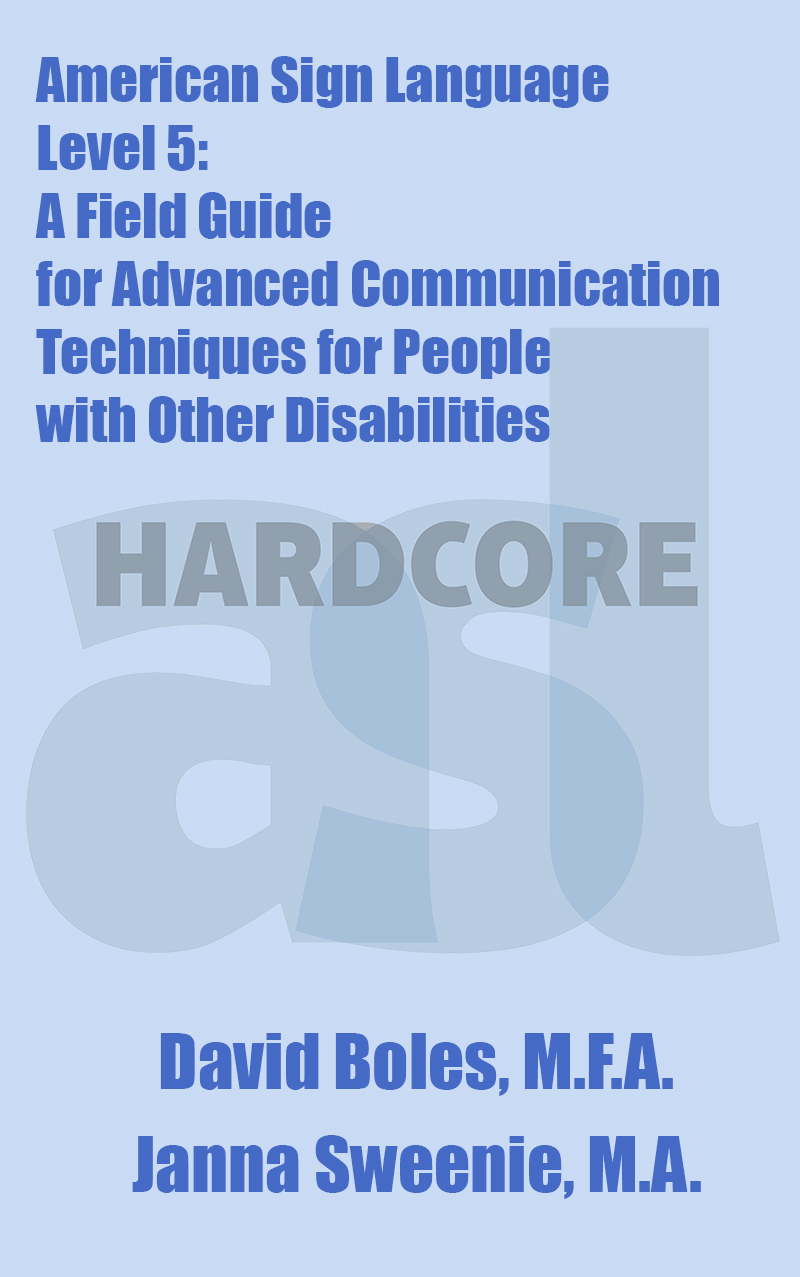American Sign Language Level 5: A Field Guide for Advanced Communication Techniques for People with Other Disabilities
by David Boles, M.F.A. and Janna Sweenie, M.A.
Our new handbook -- American Sign Language Level 5: A Field Guide for Advanced Communication Techniques for People with Other Disabilities -- is the tome of a lifetime detailing our scholarly field work and over 60 years of combined teaching:
ASL is not just for Deaf People anymore. American Sign Language is actually a sophisticated communication meme with hundreds of applications for other disabilities that many overlook. We will provide footpaths for fresh discovery of interactive cross-disability communication. We are not teaching Baby Signs here. We are teaching ASL for those with Other Disabilities.
This is also a serious, scholarly, book with hard foundations in American Sign Language grammar, glossing and syntax -- the teaching will also be fun and fresh and delightful. While this book will be appropriate and reachable for every ASL learner, our top goal is serving the advanced, “ASL Level 5” professional and also mature signers like certified interpreters, other ASL instructors and ASL teaching programs as well as the Deaf and Other Disabled communities.
Over 85% of internet searches on our online multimedia teaching properties have some form of “ASL Level 5” as keywords searching for link results. We consider that empirical and quantitative proof that the phrase “ASL Level 5” proves a want for this book and that is the push that inspired us over the edge into this publication.
For over a decade, we have been working on an answer to that timely question -- “Where is ASL Level 5?” -- and the answer now is, "Right Here!"
Here’s the chapters breakdown for the 30,000 word book:
Chapter 1: Autism Spectrum Disorder (ASD), Apraxia of Speech, Pure Alexia without Agraphia and Down Syndrome
Chapter 2: Attention Deficit Disorder (ADD/ADHD), Language Learning Disabilities (LLD), Traditional Learning Disabilities (LD), Dyslexia and other Special Needs
Chapter 3: Low Vision, the Blind and the Deaf/Blind
Chapter 4: Cerebral Palsy, Multiple Sclerosis and Other Motor Impairments
Chapter 5: Amputation, Paralyzation, Limb Birth Defects and Broken Bones
Chapter 6: Hearing Impaired and the Non-Deaf Culture Deafened
Chapter 7: Brokering Dysfunctional Communication Dyads Between Parents, Average Siblings and Disabled Children and Adults
Chapter 8: Developing Communication Skills through ASL Play
Chapter 9: Tempering Classroom Communication Disconnects Between Teacher and Student
Chapter 10: Inventing New Methods and Excepting Technological Advancements, Plus a Note on Certified Deaf Interpreters (CDI)
